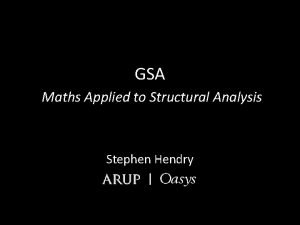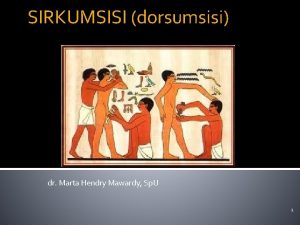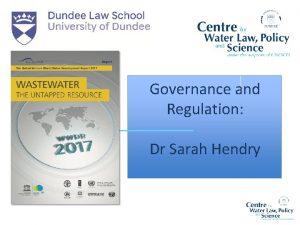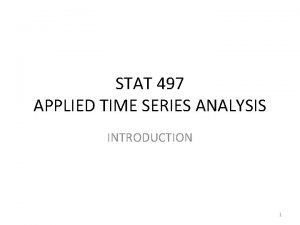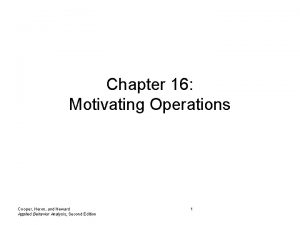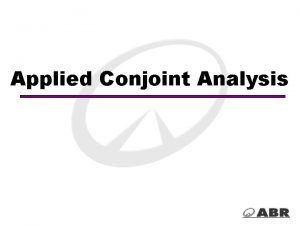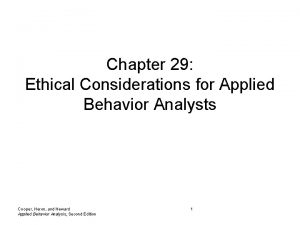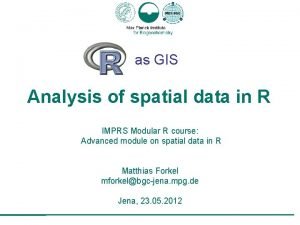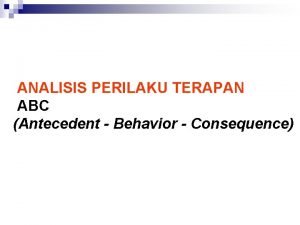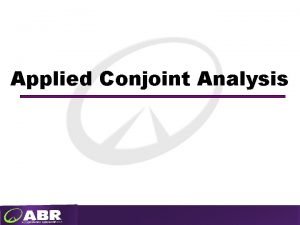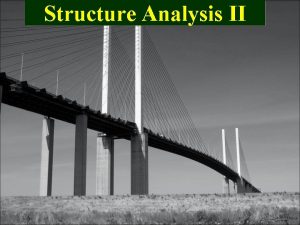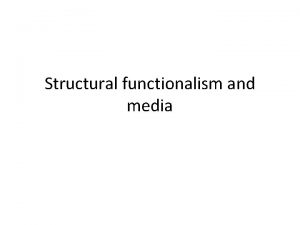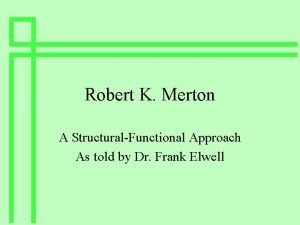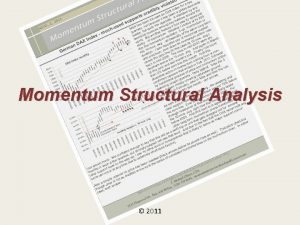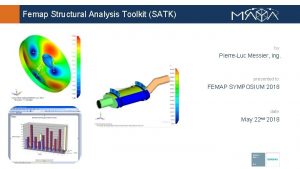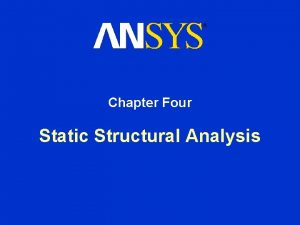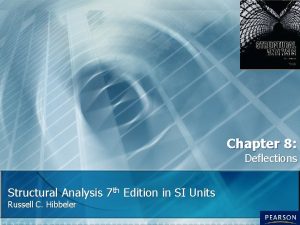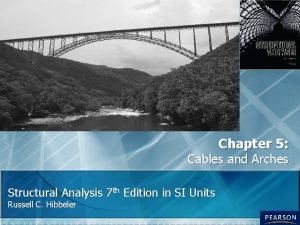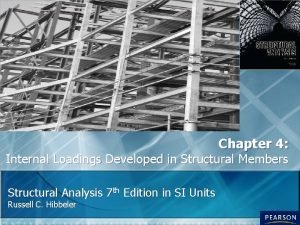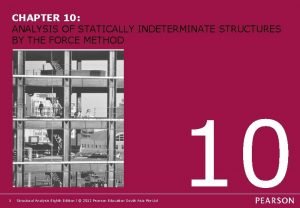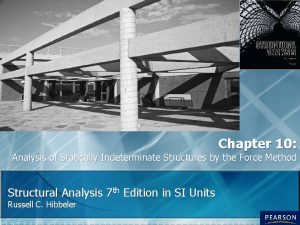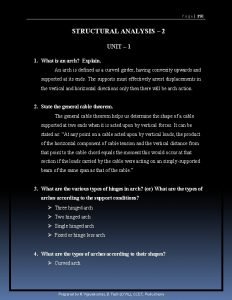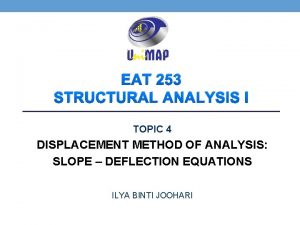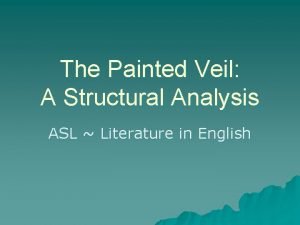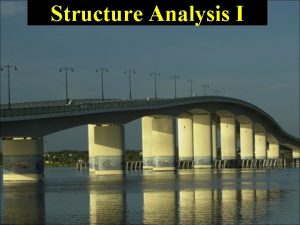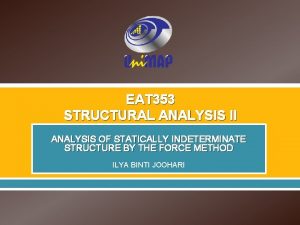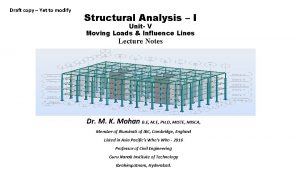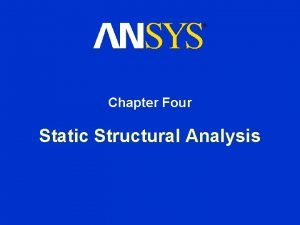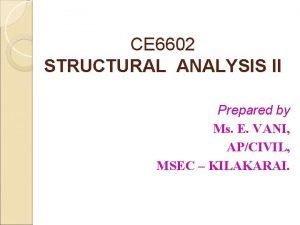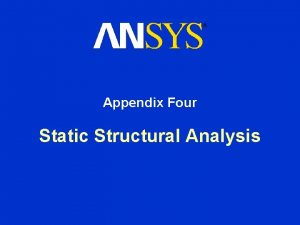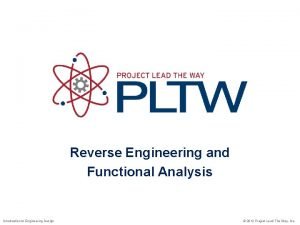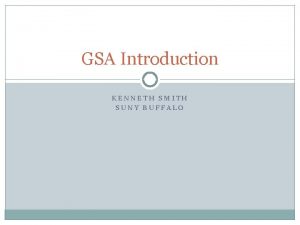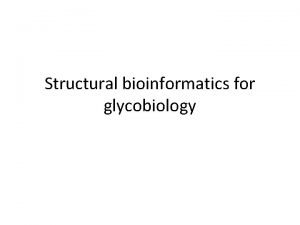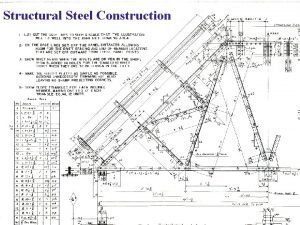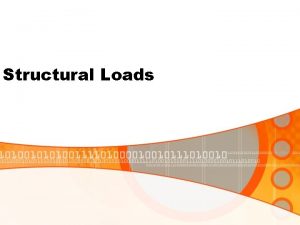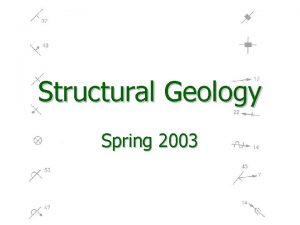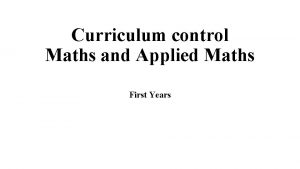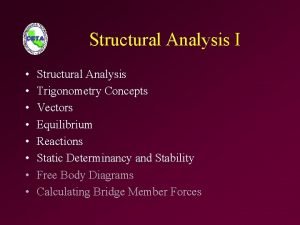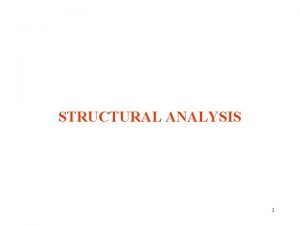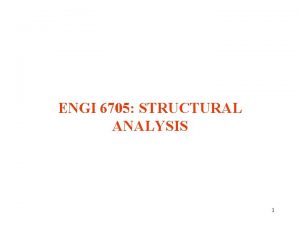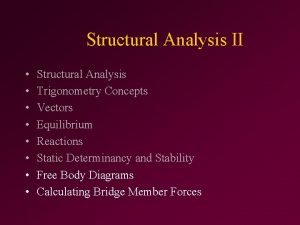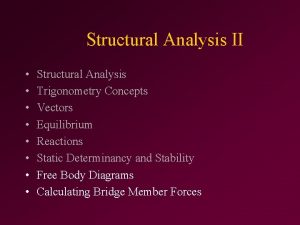GSA Maths Applied to Structural Analysis Stephen Hendry

























































- Slides: 57

GSA Maths Applied to Structural Analysis Stephen Hendry |

“Engineering problems are under-defined, there are many solutions, good, bad and indifferent. The art is to arrive at a good solution. This is a creative activity, involving imagination, intuition and deliberate choice. ” Ove Arup

CCTV - Beijing

Kurilpa Bridge - Brisbane

Dragonfly Wing

Design Process – The Idea Royal Ontario Museum - Toronto

Design Process – The Geometry

Design Process – The Analysis

Design Process – The Building

An Early Example In 1957 Jørn Utzon won the £ 5000 prize in a competition to design a new opera house

Sydney Opera House

Sydney Opera House • One of the first structural projects to use a computer in the design process (1960 s) • Early application of matrix methods in structural engineering • Limitations at the time meant that shells were too difficult • Structure designed using simpler beam methods

Sydney Opera House

Structural Analysis

Structural analysis types • Static analysis – need to know how a structure responds when loaded. • Modal dynamic analysis – need to know the dynamic characteristics of a structure. • Modal buckling analysis – need to know if the structure is stable under loading

Computers & Structural Analysis • Two significant developments – Matrix methods in structural analysis (1930 s) – Finite element analysis for solution of PDEs (1950 s) • Computers meant that these methods could become tools that could be used by engineers. • Structural analysis software makes use of these allowing the engineer to model his structure & investigate its behaviour and characteristics.

Static Analysis •

Static Analysis •

Modal Dynamic Analysis •

Modal Buckling Analysis •

Aquatic Centre, Beijing © Gary Wong/Arup

Comparison of Static Solvers 11433 nodes 22744 elements 65634 degrees of freedom Solver Solution time (s) No. terms % non-zero terms Active column 216 62229172 1. 445 Sparse 12 1403012 0. 036 Parallel sparse 4 734323 0. 017

Modelling Issues

What is the Right Model • Need to confidently capture the ‘real’ response of the structure • Oversimplification – Over-constrain the problem – Miss important behaviour • Too much detail – Response gets lost in mass of results – More difficult to understand the behaviour

Emley Moor Mast • Early model where dynamic effects were important – Modal analysis • Model stripped down to a lumped mass – spring system (relatively easy in this case)

Emley Moor Mast

Emley Moor Mast One-dimensional geometry

Over-constraining Modal analysis – restrained in y & z to reduce the problem size ‘Helical’ structure – response dominated by torsion & restraint in y suppressed this

Graph Theory

Graph Theory & Façades

Graph Theory & Façades • Many structural models use beam elements connected at nodes. • Graph theory allows us to consider these as edges and vertices. • Use planar face traversal (BOOST library) to identify faces for façade.

Graph Theory & Façades • Problem: graph theory sees the two graphs below as equivalent. • The figure on the left is invalid for a façade… • … so additional geometry checks are required to ensure that these situations are trapped.

Graph Theory & Façades

Current Developments

Current development work • Model accuracy estimation – Structure – what error can we expect in the displacement calculation – Elements – what error can we expect in the force/stress calculation • How can we run large models more efficiently

Solution Accuracy

Model Accuracy – Structure •

Model Accuracy – Structure •

Model Accuracy - Structure

Model Accuracy – Elements •

Model Accuracy – Elements •

Solver Enhancements

Domain Decomposition • Method of splitting a large model into ‘parts’. • Used particularly to solve large systems of equations on parallel machines.

Domain Decomposition • For many problems in structural analysis the concept of domain decomposition is linked with repetitive units – Analyse subdomains (in parallel) – Assemble instances of subdomains into model – Analyse complete model • Exploit both repetition & parallelism • Substructure & FETI/FETI-DP methods

Substructuring & FETI methods • Substructuring – parts are connected at boundaries. • FETI (Finite Element Tearing & Interconnect) – parts are unconnected. Lagrange multipliers used to enforce connectivity. • FETI-DP – parts are connected at ‘corners’ and edge continuity is enforced by Lagrange multipliers.

A Historic Example – COMPAS

A Historic Example – COMPAS • Historically substructuring was used to allow analysis of ‘large’ models on ‘small’ computers. • Tokamak has repetition around doughnut Split model into one repeating ‘simple slices’ and … … a set of ‘slices with ports’ • Used PAFEC to do a substructuring analysis on Cray X-MP

Substructure Identification

Substructuring • • Make it easy for the engineer! Use GSA to create component(s). In GSA master model – import component(s). Create parts – Instances of components – Defined by component + axis set • Maintain a map between elements in assembly and elements in part/component.

Substructuring & Static Analysis •

Substructuring & Static Analysis •

Substructuring & Modal Analysis • Substructuring cannot be applied directly to modal analysis. • Craig-Bampton method and component mode synthesis give an approximate method

Craig-Bampton Method • For each substructure – Assume a fixed boundary – Select the number of modes required to represent the dynamic characteristics of this component • The component can be represented in the assembly by – Boundary nodes and displacements – A matrix of modal mass and modal stiffness, with modal displacements as variables

Craig-Bampton Method •

Key Drivers • Engineer – Understanding and optimising the behaviour/design of their structures – Need for more detail in the computer models • Software developers – Problem size (see above) – Parallelism – making efficient use of multiple cores – Confidence in the results

Conclusions • Modern structural analysis software depends on maths – which engineers may not understand in detail. • Continual need for better/faster/more accurate methods to solve linear equations and eigenvalue problems. • Dialogue between engineers and mathematicians can be mutually beneficial. • Any novel ideas for us to make use of?

www. arup. com www. oasys-software. com
 Stephen hendry model
Stephen hendry model Preputium
Preputium Dr sarah hendry
Dr sarah hendry Dr rob hendry
Dr rob hendry Strong stationarity
Strong stationarity Cmo-t examples
Cmo-t examples Applied conjoint analysis
Applied conjoint analysis Ethical issues in applied behavior analysis
Ethical issues in applied behavior analysis Circular reasoning aba
Circular reasoning aba Business management courses winnipeg
Business management courses winnipeg R and gis
R and gis Applied behavior analysis programs
Applied behavior analysis programs International institute for applied system analysis
International institute for applied system analysis Discourse analysis topics
Discourse analysis topics Applied conjoint analysis
Applied conjoint analysis Poem my parents
Poem my parents Cry the beloved country characters
Cry the beloved country characters Virtual work method truss
Virtual work method truss Structural functionalism and social media
Structural functionalism and social media Merton
Merton Momentum structural analysis
Momentum structural analysis Structural analysis toolkit
Structural analysis toolkit Static structural
Static structural Deflection
Deflection Cable and arches
Cable and arches The internal loading can be found by
The internal loading can be found by Structural functional analysis is given by
Structural functional analysis is given by 10 1/2
10 1/2 Advantages and disadvantages of indeterminate structures
Advantages and disadvantages of indeterminate structures Approximate analysis of statically indeterminate structures
Approximate analysis of statically indeterminate structures Eddy's theorem in structural analysis
Eddy's theorem in structural analysis Slope deflection equation
Slope deflection equation Structural analysis literature
Structural analysis literature Influence diagram structural analysis
Influence diagram structural analysis Betti theorem
Betti theorem Abslete
Abslete Structural analysis
Structural analysis Ce 6602
Ce 6602 Structural analysis
Structural analysis Functional analysis for engineers
Functional analysis for engineers Function black box
Function black box Gsa long term lodging
Gsa long term lodging Driver id on gsa card
Driver id on gsa card Gsa short term rental
Gsa short term rental Gsa drive-thru login
Gsa drive-thru login Office of government wide policy
Office of government wide policy Gsa ser turotials
Gsa ser turotials Registration system for federal motor vehicles
Registration system for federal motor vehicles Gsa calc tool
Gsa calc tool Which mco's cover the south gsa
Which mco's cover the south gsa Gsa fas org chart
Gsa fas org chart Gsa drive thru
Gsa drive thru Gsa fas
Gsa fas Vcss gsa
Vcss gsa Gsa bmo
Gsa bmo Gsa smartpay training quiz answers
Gsa smartpay training quiz answers Gsacom
Gsacom Gsa ebuy gov
Gsa ebuy gov
